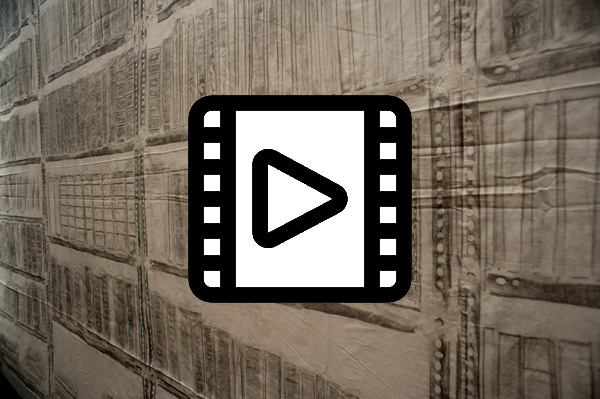


















×
![]()
PHANTOM LIBRARY
THE PHANTOM LIBRARY . Ximena Labra 2012.
Floating Installation. 150 m2 (Collapsible for transport to 3m2)
Divided into 4 sections, each around 40m2,that can be shown independently.
Graphite rubbings over fabric.
14 bookcases variable from 4 to 12 meter long, 4 to 3 m. tall, 45 cm wide aprox.
14 individual pieces 31 x 41 to 50 inches aprox
Video: 08:39 Photo series, 2+PA
Produced by Camila Sol in El Salvador as part of the Hybridatrs art Residence.
In 1928, a young man called Miguel Angel Gallardo 1908 1989 bought the complete works by Shakespeare. These were the first two books of what became one of the largest private libraries in Central America. He named the library after his grandfather, Dr Manuel Gallardo. The library was inside the Gallardo family house, a 19th century construction of bahareque and adobe bricks which is also a historic building situated in the city of Santa Tecla, La Libertad, in El Salvador. In 1948 the library was opened to the public, containing a vast number of Salvadoran literature, some of the volumes are unique including newspaper library since 1847, special hand painted editions of the Mayan Dresden and Madrid codices, a copy of the XVII French Encyclopedia, the "Vues des Cordilléres d'Humboldt 1810", a catalog of the Colonial Archive of Guatemala, a very complete library by and about Rubén Darío, who spent his youth in El Salvador, several XVI and XVII century books among many other documents, manuscripts, and a general collection of around 80,000 books. In 1987 the Gallardo Foundation was established to gather a Salvadoran historic library among other projects, and in 1989, after the death of Miguel Angel Gallardo, his son M.A. Gallardo became the president of the Foundation.
During the 13th January and 13th February 2001 earthquakes, the Gallardo house was seriously damaged. The books were rescued and temporarily moved to the National Palace.
However, the books eventually returned to the Gallardo house, which was never properly restored since 2001. For over a decade the library has been closed to the public and the books have been stored in propped-up shelves in tropical weather. Many have become soft and brown, endless halls of an incredible decaying labyrinth, dark and beautiful in its own way. The damage is irreparable, but the memory is worthy of rescue.
During 2011 I arrived to Santa Tecla with my team, mostly made of art students and a seamstress. We covered all the bookcases in the main hall and made giant graphite rubbings that accurately reproduce its size and shape and contents in a life-size hanging shroud of a Library, (150 m2). Every bookcase in this room was temporarily covered in fabric. After this the fabric was removed and sewn into the shape of the bookshelves it originally contained, so that a labyrinth with a face made of books which is suspended in space and time remained.
This project is about cultural diasporas, the dissolution and creation of History regarding a country of such recent conflicts it is still struggling to rebuild and re write it's own it's own story.
The fact that this piece is not only a labyrinth, but also a shroud suggests the intricate historic facts that have driven El Salvador to it's present moment,from the colonial period experienced in the Americas to the year 1980 under the rule of the dictator Roberto D'Abuisson, who financed by the US government under president Carter, had Archbishop Romero shot while he was celebrating Mass, which provoked civil war and the evident cultural destruction.
In August 2013, a few months before this installation was shown at the Centro Cultural de España in Mexico City, Miguel Gallardo, the Director of the Gallardo Foundation and owner of the library, was murdered on the beach near his home in La Libertad, El Salvador, by a group of sicarios, not far from the place where we met and spoke about this piece.
We do not know what will become of the library, as we do not know what will become of many situations that could be similarly portrayed in cultural, political and financial shrouds. Still, there is a subtle form that holds us together: our culture, our wisdom, our knowledge that there is a space where we are one, and we are human, pervades beyond any from of destruction.
" El universo (que otros llaman la Biblioteca) se compone de un número indefinido, y tal vez infinito, de galerías hexagonales, con vastos pozos de ventilación en el medio, cercados por barandas bajísimas. Desde cualquier hexágono se ven los pisos inferiores y superiores: interminablemente... Como todos los hombres de la Biblioteca, he viajado en mi juventud; he peregrinado en busca de un libro, acaso del catálogo de catálogos; ahora que mis ojos casi no pueden descifrar lo que escribo, me preparo a morir a unas pocas leguas del hexágono en que nací."
-J.L. Borges. La biblioteca de Babel.